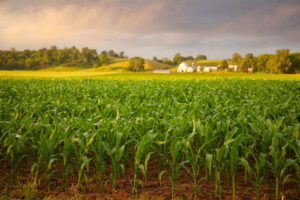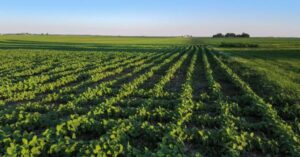
Proven Strategies for Negotiating Fair, Profitable Farm Lease Agreements
When it comes to farming, the foundation of any successful operation often lies in the details of the farm lease agreement. A well-structured lease agreement

How to Know When It’s the Right Time to Purchase Farmland
Delving into the world of farmland investment might just be the key to a secure financial future, but where does one start? Buying farmland is

Understanding Legal Obligations When Selling Farmland
Selling farmland is not just a transaction; it’s a significant milestone with unique legal responsibilities. Unlike selling a home, where a buyer might focus on

How Conservation Easements Impact Farm Management
Conservation easements play a role in shaping the way farmers, landowners, and conservationists approach land management. These voluntary legal agreements provide a unique method of

Midwest Farmland Trends: Iowa, South Dakota, Minnesota
Midwest farmland is critical to American agriculture, providing vital resources and opportunities for landowners, farmers, and investors. However, the agricultural landscape is not static—it evolves

Managing Sibling Conflict Over a Farm Inheritance
The distribution of a farm inheritance is rarely a straightforward process. Unlike liquid assets or divisible investments, a farm carries deep emotional ties, decades of

What’s It Worth? Considerations in Farm Valuation
Understanding the true value of agricultural property is a foundation for financial stability, informed decision-making, and effective legacy planning. Whether you’re thinking about selling, expanding,

How farmers should plan for pest and disease management ahead of the upcoming planting season
As the planting season approaches, farmers across the Midwest are gearing up for another year of hard work and high hopes. However, the challenges of

Guide to Sales Methods for Selling Farmland
Selling farmland is a complex process that requires thorough planning, strategic decision-making, and a good understanding of various sales methods. Every characteristic of the land,

9 Best Practices for Sustainable Farmland Management
A farm where the soil is rich and fertile, water resources are used efficiently, and a diverse ecosystem thrives—this is an achievable vision with the

How Futures Contracts Can Impact Farm Management
For farmers, managing a farm is not just about planting seeds and harvesting crops—it’s also about navigating unpredictable markets. Prices for agricultural products like corn,

Why soil stewardship matters for landowners and farmers
Imagine a farm where the soil is rich and dark, teeming with life, and the crops are robust and thriving. This isn’t just a dream;

Guide to Effective Use of Crop Insurance
Farming is a noble, yet unpredictable profession. Farmers face relentless challenges, from weather extremes to fluctuating markets, that can threaten both yield and income. It’s

Understanding Zoning with a Land Management Company
Navigating zoning laws and regulations can feel like solving a complex puzzle, especially for farm owners and real estate developers. Zoning directly impacts how landowners

You Inherited the Family Farm: Now What?
Taking over a family farm can feel overwhelming, especially if agriculture isn’t your background. The land may come with countless memories of family gatherings and

Maximizing Yield: Tips for Effective Fertilizer Management
Efficient fertilizer management is a necessity for farm owners, and it’s an attainable goal. When practiced correctly, applying fertilizer can significantly boost crop yield while

How to negotiate farmland lease agreements with tenant farmers
Navigating the farmland leasing landscape can be both rewarding and challenging for landowners. Understanding the intricacies of lease agreements is crucial for establishing a successful

The Role of Technology in Commercial Real Estate Management
Observe the role of technology in commercial real estate management so you can stay ahead of the curve and be ready to keep your business

Understanding Farmland Prices: What Influences Costs?
The changes in the agricultural industry are affecting farmland prices. For farmers looking to expand their holdings or investors seeking lucrative opportunities, it’s important to

How To Research Farmland Before an Auction
Buying farmland is a significant investment. Auctions offer a unique opportunity to acquire property that might otherwise be out of reach, but entering an auction

Why Land Management Companies Support Conservation Efforts
In the delicate balance of agriculture and land use, conservation efforts have become more crucial than ever. This necessity has brought about a growing partnership

Soil stewardship best practices that lead to successful farms
Soil is the foundation of every successful farm, and understanding its intricacies is crucial for sustainable agriculture. In today’s farming landscape, responsible soil stewardship is

Innovative Irrigation Methods for Efficient Water Use
Efficient water use in agriculture is critical, but uncovering and utilizing the right techniques isn’t always easy. This blog post explores innovative irrigation methods for

How To Evaluate a Commercial Property Investment
Investing in commercial property can be lucrative, often offering more substantial returns than residential properties. However, you must approach this investment with careful consideration and

